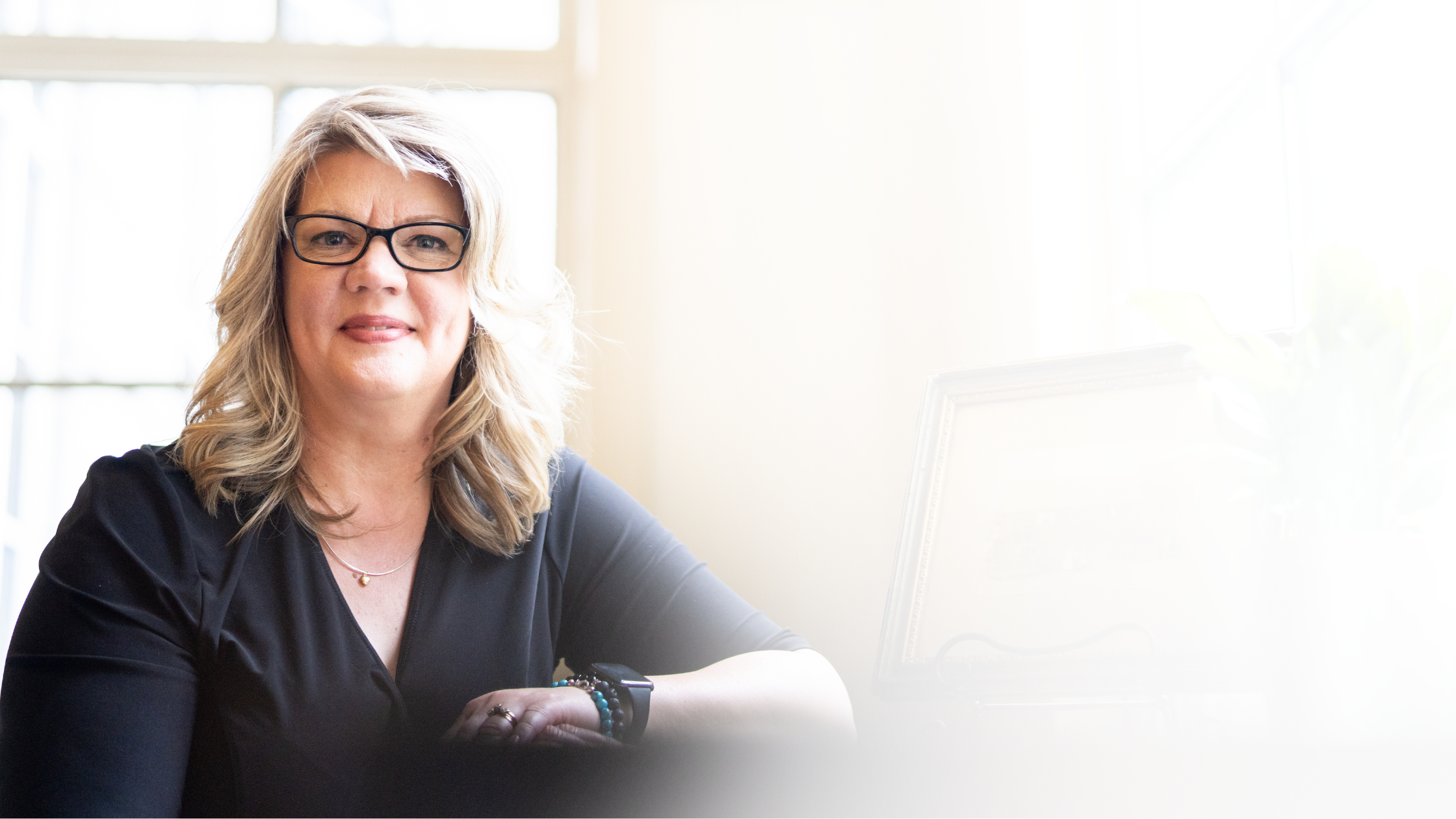MEET YOUR PHOTO MANAGER
Trish Cain
My fascination with family history and photography began the day my mom inherited her great grandmother’s steamer trunk from her American immigration in 1890. The trunk arrived unannounced on our doorstep one summer afternoon. And so began the curiosity and detective work behind who we are and where we came from.
We dragged the heavy trunk into the living room - my mom carefully opened the latch and lifted the top. It smelled like old books, linen, and lavender. There was a top shelf with a cigar box of handwritten letters folded with care and tucked away. Another cigar box of crocheted pink baby booties, I later discovered was likely from my grandmother’s newborn child that passed away. There was a small Bible with a handwritten inscription from her pastor, and a well-used prayer book. Another wonderful and curious treasure was a carte-de-visit album with pages and pages of unnamed people who looked like us.
The journey began… who was this amazing woman who left everything and everyone behind and courageously immigrated alone to the United States? Where was she and what was she doing in the years before she married my 2nd great grandfather? I could see evidence of her bravery, love, and heartache in that trunk. She is still, decades later, my brick wall – Anna Gleave Condit.
For years, I balanced my fascination with family history against the beautiful chaos of a cross country move and raising a family. I was the mom behind the camera at birthdays, Christmas, and scouting events. The digital camera, and then the great equalizer – the iPhone - helped me to accumulate thousands of images and videos while those Victorian strangers waited patiently in their album.
Then, life delivered a one-two punch that changed everything.
First, our mom’s sudden passing. Fighting back waves of tears and overwhelming grief, my sisters and I found ourselves “death cleaning” while frantically searching for our childhood memories and family photos. All this was happening while we also tried to organize our beloved Mom’s Celebration of Life. I have named this the Photo Catastrophe Zone – a place I don’t want anyone else to go if I can help it. We were relieved to find a few moving boxes with our family photos and childhood memories. We remembered the unconditional love and faith of our own mom as we sorted through letters, journals and books she read. Here we were with family photos and the person who could tell us the stories - GONE.
A few months later, I found myself going through the same process again in my grandmother’s house (my mom’s mom) – more grief and tears - more boxes of photos and memorabilia – this time from her childhood in the 1910s, 1920 and her wedding shortly after World War II ended. Memorabilia from my grandfather’s time in the Navy – Pearl Harbor. And, again, the stories - LOST.
I was determined to organize these stories, figure out the life story of Anna Gleave, and write our family history using photos. I was ABSOLUTELY stuck! I asked the original Google – my local librarian for help, but there weren’t many books on organizing generations of photos. Then, I stumbled across The Association of Personal Photo Organizers (now The Photo Managers). At last, people who were solving my problem! In 2018, I took control of my photo chaos and decided this is so important, and I have to help others preserve their photos, too. I was right, I wasn’t the only person with this problem and it creates the same anxiety and fear as it did with me.
I got resourceful. I read, took courses, and spent time with experts.
I BEGAN PIECING TOGETHER MY OWN PHOTO PEACE PROCESS FOR ELIMINATING PHOTO CHAOS AND EMBRACING A PHOTO PEACE COLLECTION.
I recognized that I needed to completely rethink how we approach photo management. I did the work of testing different software, cloud storage, and learning the best way to digitize. Now, with my first hand experience of drowning in generations of photos, coupled with proven systems, I’m able to help other people find their way to Photo Peace with the exact roadmap I wish I’d had.
Today, I help people escape their own Photo Disaster Zones and rescue their precious memories from chaos. Most importantly, I help people take control and have confidence with their memories. They are no longer paralyzed by the overwhelming task or haunted by photo guilt. They’ve discovered Photo Peace isn’t about perfection – it’s about progress, systems, and having someone who’s been there guide you through.
But, I also know the deep peace that comes from having my own best photos, safe, accessible, and actually enjoyable. And, those Victorian strangers, you ask? Well, first, those images are safe in my Photo Peace Collection. Many now have names, connections and stories that humble me and remind on whose shoulders I stand.
Your photo legacy deserves better than boxes in the basement or digital files scattered across devices. Let me show you the way to Photo Peace – because every family needs a memory hero, and that hero is YOU!
I’m passionate about helping people who care about their photo legacies create their own Photo Peace Collections.
But, it only works if you have a clear vision and plan that you can follow. With the right mindset, processes, and workflow you can get past your own struggles and worries about your pictures and videos.
Helping other people with their photo projects has helped me learn from my own mistakes. Mistakes that you can learn from, too:
Technology can be a friend and a foe. I often fell for every “revolutionary” photo organizing app that promised to solve all my problems. Apple Photos, Dropbox, different scanning apps, plus whatever came with my phone. By the time I realized what I’d done, my photos scatted across several platforms with duplicate copies everywhere but no collection. The truth? You need ONE primary system, not a digital junk drawer of half-used apps.
”I’ll figure it out as I go” never works. Diving into photo organizing without a plan is like trying to build a house without blueprints. I’d spend entire weekends “organizing” only to realize I’d been moving the same photos from folder to folder without any real system. Now I know: having a clear roadmap BEFORE you start saves hours of time, money, and prevents the defeated feeling when you realize you’ve been spinning your wheels.
Scan first – organize never. In my panic to preserve everything, I made the critical mistake of digitizing before organizing. I scanned hundreds of photos and created a digital mess to match my paper one! All those hours of scanning and I had to start over.
Temporary storage is a perpetual problem. “I’ll just put these on a USB drive for now.” Those temporary solutions multiply – external drives fail, USB sticks disappear, CDs become unreadable. I learned the hard way that every temporary storage solution becomes tomorrow’s digital archeology project. Your photos deserve a permanent home.
There’s a difference between photo excess and a photo collection. The hardest lesson? Not every photo deserves to be saved. Those 37 live photos of your child’s 4th birthday cake don’t honor the memory – they bury it. Learning to curate and train my eye transformed everything. When I stopped trying to save every image and started building a thoughtful collection, our photos became joy instead of a burden. Quality over quantity isn’t just a saying; it’s the secret to Photo Peace!




